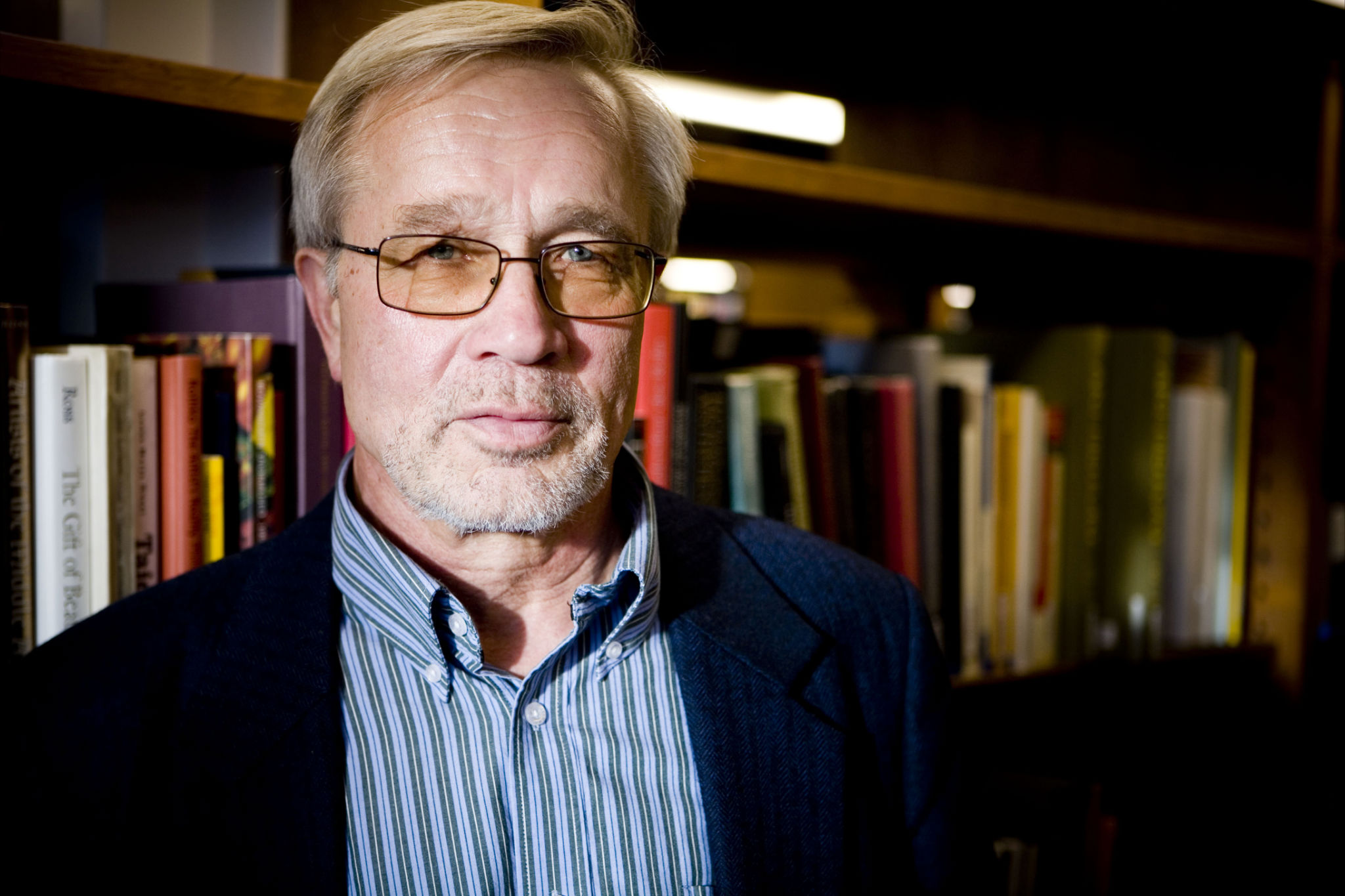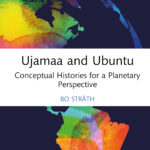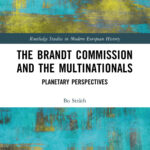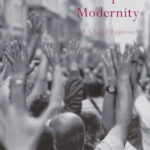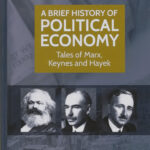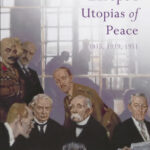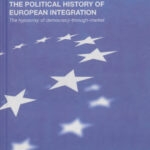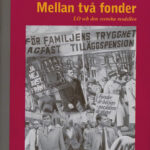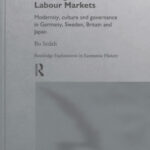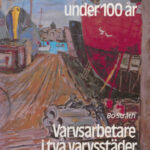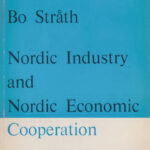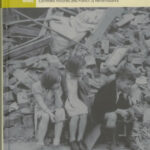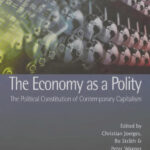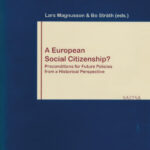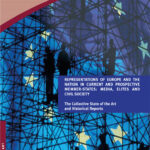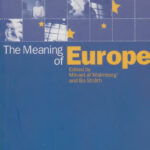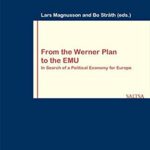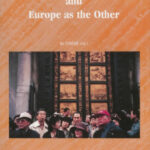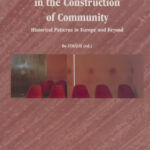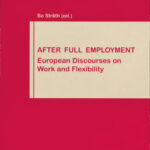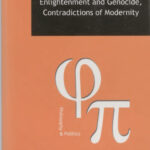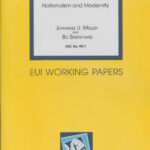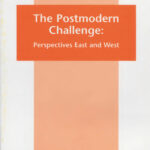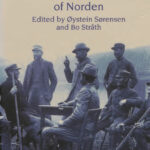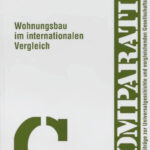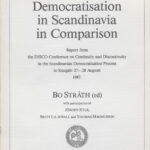The discourse around globalization sped up in the 1990s. It was a strong expression of the remaining impact of the nineteenth-century narrative on how Europe civilized and modernized the world. Europe was capitalism and democracy as ever-expanding forces for the world in mutually reinforcing dynamics. After 1945 the European center moved westward to the USA. Europe became the West mastering the world through superior technology to emulate for other parts.
The planetary threat
There was another story, however, which disappeared in the globalization euphoria. The launch of Sputnik in 1957 introduced a new phase in the story of European human progress but it connoted threat as much as promise. The Soviet Union’s hubris was matched by the USA’s fears of losing the space race. Hannah Arendt cut through the contentious Cold War perspectives, seeing the event as an overall threat for the world. Since around 1500, the circumnavigators explored the world, and when they had mapped it, they foresaw, as a next step, space exploration and cherished the dream of escaping Earth once it had been fully explored. This goal contained the danger of Earth alienation, Arendt wrote – perilous because the Earth-bound nature of humans was impossible to disentangle from their human condition. Arendt’s notion of Earth alienation hinted at the risk of humanity’s destruction of itself. [1]
In the same somber vein, Reinhart Koselleck found that “our globe… has become a closed spaceship roving in an endless universe.” [2] Ahrendt was far from alone in her warning of earth alienation and Koselleck was not the only one who shared her concerns, however. The theme and the scepsis was spread. Already in 1956, the year before Sputnik, Harry Martinsson published his verse poem Aniara about the space transporter with 8000 emigrants from the Earth bound for March, escaping environment pollution and wars, clashing with meteorites and getting off course, but defying them continuing towards what had no end. The imagery of technologic progress had a dystopian dimension.
Arendt’s focus was on all technological development since 1500 rather than man’s more recent interest in space. Her concern was the technological development that had led to human’s ability to escape the Earth’s atmosphere. Her 1950s warning of technological hubris was connected to a long tradition of warnings about the destructive risks of the machine age, Nietzsche being one of the strongest voices in that chorus.
Today Arendt’s warning is reflected in our current fears about the transcendence of the human embodiment of reason into artificial intelligence. Who makes up the forces which program AI? Who controls AI and who is it controlling? Who assumes the moral authority to replace Kant with anonymous algorithms? And yes, her concern in the 1950s about the risk of earth alienation, a basically psychological term about identification with, feelings of belonging to the planet, has today become a physical threat of destroying the planet through warfare from and in the space or human-made climate change making the planet uninhabitable The coming reality might be even worse than what we can imagine in our fictions today.
The planetary alternative
Dipesh Chakrabarty comments on Arendt’s concern in his development of a planetary perspective on life on Earth. Arendt’s view, he argues, leaves humans with two alternatives: to feel homeless (referring to her notion of Earth alienation), and thus accepting the destiny that Arendt warned of, or to work towards what he calls a planetary unity in which all humans come to identify with the planet as their home and, by implication, transcend racial, ethnic, religious, and class boundaries. Chakrabarty’s second option offers an alternative to Arendt’s fear of Earth alienation, and to Koselleck’s, Martinsson’s, and many others’ warnings about future dystopian threats and risks.
His scenario, a counter-image of hope and possibilities, is a response to their warnings. It is a counter-image in which people identify with the planet as their home, and it makes points like those in Achille Mbembe’s work on the conceptualization of hospitality and hostility. [3] However, Chakrabarty is not saying that it is going to be easy. By means of the term Anthropocene for the present geological era, he demonstrates the destructive capacity of humans, their devastating impact on nature and environment. He only argues that the problem is a matter of choice. Humans have at least to a certain extent their destiny in their own hands.
Chakrabarty’s invitation to the world’s human inhabitants to “work on” planetary unity distinguishes that unity from utopian historical projects about final world unity, which are teleological and self-propelling towards a final goal inherent in the historical process itself, such as liberal market globalization, its Marxist counter story, or other similar mystifications. To “work on…” implies hard work, facing and coming to terms with disagreements about how to shape the future within the context of difficult discursive disputes, where nothing is predetermined. It is strenuous work by humans, with humans being responsible for their success or failure and their destiny. Chakrabarty appeals to human agency and responsibility, rather than beliefs in goal-bound automatic processes intrinsic in history itself. There is no History – singular, and with a capital H – whether it’s called Liberalism, Socialism, Nationalism, the End of History, or anything else. For good or evil, there are only human-made histories – in the plural.
The concept of the Anthropocene is at odds with the globalization narrative. Anthropocene focuses our attention on man’s impact on the world, seeing it as a quasi-geological force, though one which acts much faster than any natural agent can transform land masses and oceans. Man can destroy them. The term ‘Anthropocene’ is a correction and an objection to the dream of the globe as an unbounded market with endless resources, a dream that in a Freudian sense represses the term ‘exploitation’ (either of nature or of humans). With the term Anthropocene the conclusion is that to lead our action and vision for the world in new directions, globalization, and everything that concept came to stand for, must be replaced by a new conceptualization with the idea of ‘global’ in a planetary perspective at its heart. Seen from the space, the planet Terra is not endless but finite in an infinite universe. Seen from the space Terra is not a market but a place of human cohabitation.

Hannah Arendt and Dipesh Chakrabarty
The polycrisis in the 1970s
Between Arendt writing in the 1950s and Chakrabarty writing in our present, there was the metamorphic polycrisis in the 1970s which imposed new ways to think about the future. The old future, born in 1945 in reaction to the experiences of the world wars died in the polycrisis. The future that died dealt with the global fulfillment of the promises of progress that followed on the industrial revolution. The future that died was about the global fulfillment of the Western civilization project. Under the label of modernization and with the instrument of development aid the Western modernity and its wealth would become global. The idea was to copy the British industrial revolution and paste it all over the world. The 1970s crisis imposed a brutal wake-up from that dream. The wake-up brought new ways to imagine the future. The talk about modernization and development as a consequence of decolonization came to an end.
The 1970s polycrisis dealt with resource exhaustion, environment pollution, declining productivity growth, hiking inflation, mass unemployment, world poverty and world hunger. Conventional economic theory failed to deliver answers and orientation. There were three major problem fields which were connected. One was the national government control of capitalism in the stagnating Western growth economies. Another problem was the environment pollution and the threatening resource exhaustion. The third problem cut across the two other problems, which were basically articulated in the rich North/West. The poor countries ‒ unified politically since 1955 as the Third World and economically since 1964 as Group 77 within the United Nations Conference on Trade and Development (UNCTAD) ‒ claimed in 1974, against the backdrop of the crisis, a New International Economic Order (NIEO) with a juster distribution of the world’s resources. The claim increased the feelings of crisis in the North/West but provoked promises of a better future in the South. The polycrisis unified both the North and the South as well as articulated the tensions between them.
Two planetary views emerging in response to the 1970s polycrisis
The Brandt Commission and the Multinationals: Planetary Perspectives explores two approaches to rethinking the future in reaction to the polycrisis. Two competing and exclusive planetary perspectives emerged of this rethinking. The one dealt with how the world’s wealthy could consolidate and expand their wealth at stake in the crisis. The other focused on how the world’s poor could get out of their misery and precarity by getting a larger share of the global pie.
The North-South Commission (1977-1983), chaired by Willy Brandt, tried to bridge the growing gap between the North and the South by proposing a new planetary world order which in crucial respects followed the NIEO claim. The proposal dealt with a redistributive world economy where a new currency, Special Drawing Rights, replaced the role of the dollar and imposed balance between countries with trade surplus and those with trade deficit. The major reason of the fact that the poor countries had trade deficits and the rich countries trade surplus was that the prices increased slower for raw materials (which mainly the poor countries exported) than for manufactured products (which mainly came from the industrialized countries). The Brandt Commission had a proposal for how to rectify this terms-of-trade problem, too. International taxes for global redistribution from the rich to the poor countries underpinned the proposal. One can summarize it as a kind of world Keynesianism.
The world order that collapsed in the 1970s was based on the dollar. The World Bank and the International Monetary Fund were the financial pillars of the order decided in Bretton Woods in 1944. The countries in the rich Western world had the power in these two institutions. The Brandt Commission proposed a movement from the Bretton Woods order towards the United Nations where each member state had one vote in the general assembly and the Third World thus the majority.
The Brandt Commission worked against the backdrop of an intense debate on resource exhaustion and environment pollution in the early 1970s. The Limits to Growth in 1972 was an export report about a coming global resource exhaustion that stirred up a heated debate. The core of it was that the economies of growth could not continue. The implicit understanding was that a global living standard like in the rich world accelerate the resource exhaustion. The same year UN organized a big environment conference in Stockholm where the term ecocide was used. The Third World was well represented and agreed that solutions needed to be found globally to the environment pollution, but they refused to connect their stand on this point to a stop of growth which would mean a stop to any hope to catch up the rich countries.
The Brandt Commission addressed the growing environment pollution and the threat of natural resource exhaustion but didn’t really manage to connect them to a new economic world order requiring a new economic theory. They proposed an updating of Keynes national economics to world economics but failed to develop ideas about ecological economics. The debate in this problem field was still embryonic. This is a gap where Chakrabarty’s approach and the Anthropocene concept might be able to take over.
The Brandt Commissions NIEO-supporting proposal stood in sharp contrast to the simultaneous work on a quite different post-crisis world order built around the image of a planetary enterprise escaping the pre-crisis Western order of national political economies of demand-orientated Keynesian redistribution. The Keynesian growth model, driven by and driving the political management of national welfare economies in a small but affluent part of the world and maintained by the reconstruction boom after the Second World War and, according to some, by colonialism and neocolonialism, was coming to an end. The same was true for the Fordist production regime sustained by the mutually reinforcing dynamics of mass consumption and mass production. Representatives of capital foresaw the decline and began to work on alternatives. Leading spokespeople of what one can only describe as a business campaign referred to a new kind of globally operating enterprise.
The new global corporations viewed the world as one economic unit. Contemporary observers regarded them as “the first institution in human history dedicated to central planning on a world scale,” and argued that, to do their job, their managers required the right to transform and transcend the nation-state. They were the first commercial agent in world history with the organization, technology, money, and ideology “to make a credible try at managing the world as an integrated unit.” They were enterprises with a planetary vision. [4]
The new multinational/transnational companies (MNCs/TNCs) escaped national government monitoring. Supported by new political and economic thoughts on a post-crisis world of free global markets without national boundaries for capital, labour, and commodities they took prompt action to implement their plan for planetary enterprises. They began to restructure the labour markets and the global trade fundamentally. Their solution to the environment and resource problem was technological innovations promoted by the free global market.
Two planetary perspectives, two globalisms, stood against each other: political management of a global economy with redistribution from the rich North to the impoverished South versus the multinationals’ escape from political market monitoring through the new kind of planetary enterprise.
The book on Brandt Commission and the multinationals connects the two planetary perspectives to the warnings of Arendt and Chakrabarty’s alternative proposal. Arendt is a point of reference as a Cassandra, a warning of the global corporations’ development of technology and their economic power claims. Chakrabarty’s approach provokes the question of what relevance the Brandt Commission might have today. They at least touched upon problems that Chakrabarty gives substance to in ecological and redistributive terms half a century later.
[1] Hannah Arendt, The Human Condition. Chicago: Chicago University Press 1958.
[2] Reinhart Koselleck, ”Einige Fragen an die Begriffsgeschichte von ‘Krise‘“ in Krzysztof Michalski (Hg), Über die Krise. Castelgandolfo Gespräche 1985. Stuttgart: Klett-Cotta 1986: 64-77.
[3] Dipesh Chakrabarty, The Climate of History in a Planetary Age. Chicago: Chicago University Press 2021; ibid, One Planet, Many Words. The Climate Parallax. Waltham, Mass: Brandeis University Press 2023; Achille Mbembe, Politique de l’inimitié. Paris: La Découverte 2016.
[4] Richard Barnet and Ronald Müller, Global Reach. The Power of the Multinational Corporations. New York: Simon & Schuster 1974.
How to quote:
Cit. Bo Stråth, “Two Planetary Perspectives ‒Two Futures: The Global Corporations and the Brandt Commission ‒ Arendt and Chakrabarty.” Blog. https://www.bostrath.com/planetary-perspectives/concept-of-the-planetary/two-planetary-perspectives-two-futures/ Published 07.08.2024
Comments
Please submit you comments with the Contact Form or send an Email to bo.strath@gmail.com.
